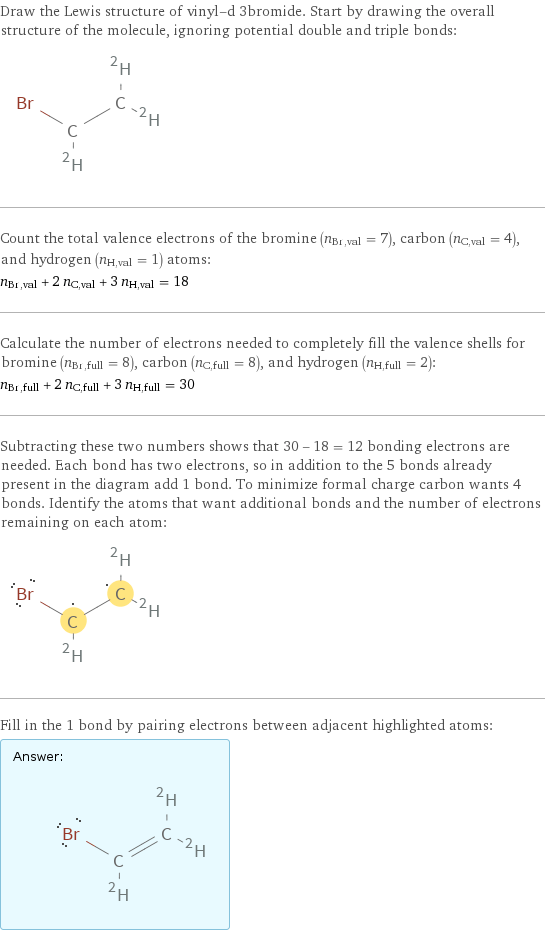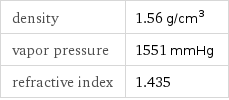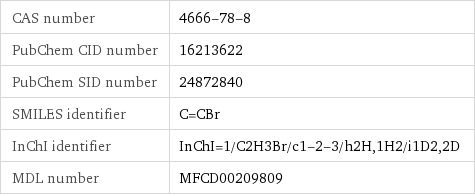Input interpretation

vinyl-d 3bromide
Chemical names and formulas

formula | D_2C=CDBr Hill formula | C_2D_3Br name | vinyl-d 3bromide IUPAC name | 1-bromo-1, 2, 2-trideuterioethylene alternate names | 1-bromo-1, 2, 2-trideuterio-ethene | 1-bromo-1, 2, 2-trideuterioethene | 1-bromo-1, 2, 2-trideuterio-ethylene mass fractions | Br (bromine) 0.727% | C (carbon) 0.218% | H (hydrogen) 0.0549%
Lewis structure

Draw the Lewis structure of vinyl-d 3bromide. Start by drawing the overall structure of the molecule, ignoring potential double and triple bonds: Count the total valence electrons of the bromine (n_Br, val = 7), carbon (n_C, val = 4), and hydrogen (n_H, val = 1) atoms: n_Br, val + 2 n_C, val + 3 n_H, val = 18 Calculate the number of electrons needed to completely fill the valence shells for bromine (n_Br, full = 8), carbon (n_C, full = 8), and hydrogen (n_H, full = 2): n_Br, full + 2 n_C, full + 3 n_H, full = 30 Subtracting these two numbers shows that 30 - 18 = 12 bonding electrons are needed. Each bond has two electrons, so in addition to the 5 bonds already present in the diagram add 1 bond. To minimize formal charge carbon wants 4 bonds. Identify the atoms that want additional bonds and the number of electrons remaining on each atom: Fill in the 1 bond by pairing electrons between adjacent highlighted atoms: Answer: | |
3D structure

3D structure
Basic properties

molar mass | 109.97 g/mol phase | liquid (at STP) melting point | -139 °C boiling point | 16 °C (measured at 99975 Pa) density | 1.56 g/cm^3
Units

Liquid properties (at STP)

density | 1.56 g/cm^3 vapor pressure | 1551 mmHg refractive index | 1.435
Units

Non-standard atom properties

H-2 | 3
Chemical identifiers

CAS number | 4666-78-8 PubChem CID number | 16213622 PubChem SID number | 24872840 SMILES identifier | C=CBr InChI identifier | InChI=1/C2H3Br/c1-2-3/h2H, 1H2/i1D2, 2D MDL number | MFCD00209809